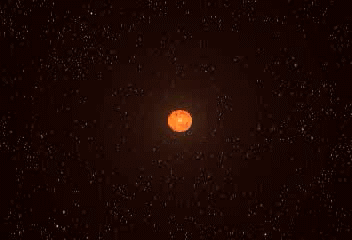Today's topic is planets around white dwarves. First, why do we care? Well, everyone wants to find more planets, and in this case we'd be seeing planets that survived the deaths of their host stars.
When a main sequence star like the sun reaches a certain age (around 10 billion years old for the sun), it expands and cools, becoming a red giant. At this point, depending on a number of factors including the mass of the star, it can engulf the planets around it. If this happens, the planets experience a drag force (think "wind resistance") as they move through the star's atmosphere and they spiral in to the center, where they burn up and are destroyed.

However, if the star is just the right size and the planet is in just the right place, something more interesting may happen. The Red Giant phase lasts for a few hundred million years, after which it undergoes an Asymptotic Giant Branch (AGB) phase where it alternately grows and shrinks. During this phase, it will temporarily engulf a planet, but not for long enough to destroy it - just long enough to move it inwards a little bit. Of course, conditions on the planet won't be very pleasant during this period.

As shown in the animation, the AGB phase leads into the formation of a planetary nebula with a white dwarf at the center. If things went right, a planet could end up close to the white dwarf after the tumultuous period just described.
This is an exciting proposition because it opens the possibility that we could detect the planet interacting with the White Dwarf's magnetic field. You may recall hearing that the Earth has an iron core, which is why it has a magnetic field surrounding it. A similar planet orbiting a white dwarf would generate currents, and the electrons would then flow onto the poles of the white dwarf and show up as hot spots, like on Jupiter.

The hot spots would be impossible to spot by normal methods, but on either side of the hot spots there are big lobes where the electrons will emit radio light, which is detectable by the best radio arrays on the ground (e.g. the Very Large Array and LOFAR).

Why should we care? Well, besides just detecting the presence of a planet, we would be able to tell something about the conductivity of its core, which is very difficult in any other situation. We might also be able to say whether the planet has a magnetosphere and therefore was Earth-like. Finally, we could say something definitive about the eventual fate of the Earth... in about 4.5 billion years.
This post was based on papers by Andrew Willes and Kinwah Wu in 2004 and 2005.
No comments:
Post a Comment